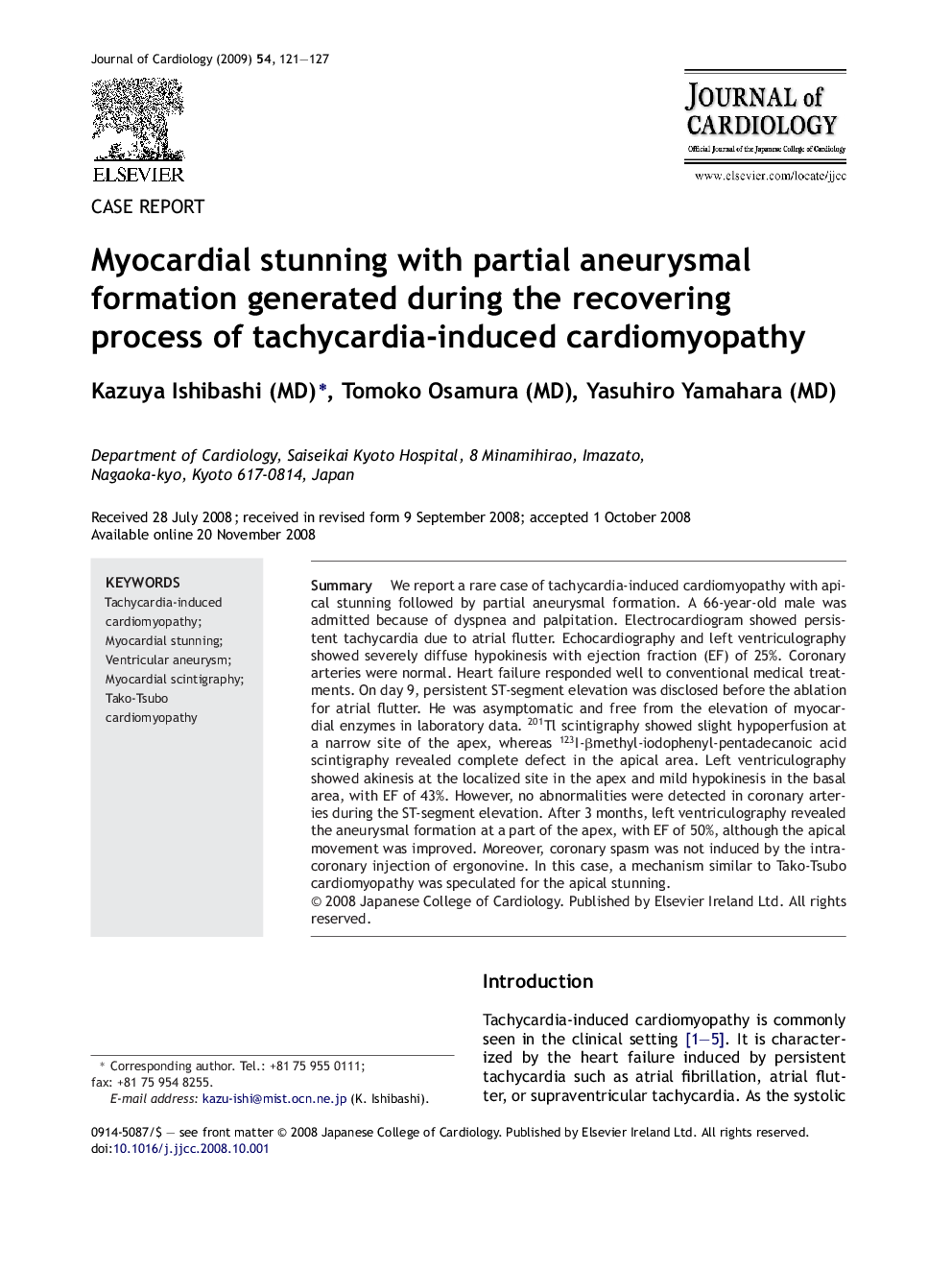| Article ID | Journal | Published Year | Pages | File Type |
|---|---|---|---|---|
| 2963758 | Journal of Cardiology | 2009 | 7 Pages |
SummaryWe report a rare case of tachycardia-induced cardiomyopathy with apical stunning followed by partial aneurysmal formation. A 66-year-old male was admitted because of dyspnea and palpitation. Electrocardiogram showed persistent tachycardia due to atrial flutter. Echocardiography and left ventriculography showed severely diffuse hypokinesis with ejection fraction (EF) of 25%. Coronary arteries were normal. Heart failure responded well to conventional medical treatments. On day 9, persistent ST-segment elevation was disclosed before the ablation for atrial flutter. He was asymptomatic and free from the elevation of myocardial enzymes in laboratory data. 201Tl scintigraphy showed slight hypoperfusion at a narrow site of the apex, whereas 123I-βmethyl-iodophenyl-pentadecanoic acid scintigraphy revealed complete defect in the apical area. Left ventriculography showed akinesis at the localized site in the apex and mild hypokinesis in the basal area, with EF of 43%. However, no abnormalities were detected in coronary arteries during the ST-segment elevation. After 3 months, left ventriculography revealed the aneurysmal formation at a part of the apex, with EF of 50%, although the apical movement was improved. Moreover, coronary spasm was not induced by the intracoronary injection of ergonovine. In this case, a mechanism similar to Tako-Tsubo cardiomyopathy was speculated for the apical stunning.
